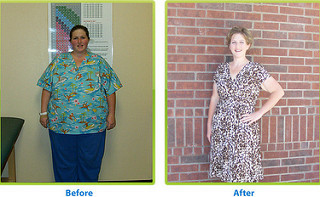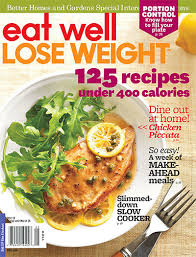How to Lose 12 Pounds in One Month
You can lose 12 lbs. (5.44 kg) in 1 month if you reduce the number of calories you eat each day and increase the amount of time you spend exercising. To lose 12 lbs. (5.44 kg) in 1 month, aim to shed 3 lbs. (1.36 kg) a week for 4 weeks. Before you start a weight-loss plan, talk to your doctor to make sure you are healthy enough to lose weight and to ensure you can actually lose 12 lbs.
Steps
Part 1 Setting your Goals
-
1
Understand how weight loss works. In order to lose weight, you need to burn more calories than you consume each day. You can achieve this by cutting calories from your diet and burning calories through exercise.
- A single pound of weight (.45 kg) has 3,500 calories in it. So in order to lose 3 lbs. (1.36 kg) a week, you'll need to reduce your calorie consumption by 10,500 calories each week, or 1,500 calories a day.
-
2
Get a realistic picture of the number of calories you eat each day. In order to figure out how many calories you can realistically cut from your diet, it is a good idea to calculate how many calories you currently consume.
- You may think you're only eating 2,000 calories when in fact you're eating 2,200 each day. So if you want to lose weight quickly, it's important to have an accurate idea of how many calories you need to cut from your diet.
- You can calculate your daily calorie intake by eating as normal, but making a note of exactly what you ate. In addition, you will need to specify exactly how much you ate. For example: half a cup of salted peanuts or 8 oz. full fat latte. Then you can use an online calorie chart to calculate your total daily calorie intake.
- 3 Use the Web MD Body and BMI Calculator. Although many fitness websites will give you the option to calculate weight loss goals by signing up for their newsletter, this site will give you some solid advice about the steps you need to take, considering your weight, height and waist size.
- 4 Type your body measurements and your weight loss goal into the calculator. Scroll through the BMI and Weight tabs until you get to “Calories.” This tab will tell you how many calories you should eat per day to meet your weight loss goal in a healthy way.[1]
-
5
Never eat less than 1200 calories per day. Depending upon your weight and height, you may want to set this restriction at 1500 until you lose some weight, so that your body doesn’t store fat instead of burning it.
- This calculator is based on the premise that you should lose no more than one to two pounds per week.
- Never skip breakfast. This meal restarts your metabolism. Avoiding breakfast will tell your body to store calories, rather than burn them, during the day.
-
6
Tailor your weight loss plan to your individual situation. Every person is different, so it stands to reason that the same diet plan won't work for everyone. In particular, it is important to consider your starting weight/calorie intake in order to develop a realistic (and safe) weight loss plan. For example:
- If you are significantly overweight and eat over 3,000 calories per day, it should be relatively easy to cut 1500 calories or more from your daily diet.
- However, if you generally only eat about 2,000 calories per day, it might be difficult to cut 1500 calories from your meals without feeling tired or out of energy.
- If this is the case, aim to reduce your calorie consumption to about 1,050 to 1,200 calories per day, as this is the minimum amount necessary to keep energy levels up. Then you can just lose any additional calories through exercise.[2]
-
7
Keep a food journal. As you begin your weight loss plan, it's a good idea to keep a journal in order to track the amount of food you eat each day.[3]
- Make sure to list every single morsel that passes your lips - don't forget to count that sneaky square of chocolate or extra handful of nuts. When you fail to accurately track your eating habits, you are only fooling yourself.
- By writing down what you eat, you are holding yourself accountable. In fact, studies have shown that people are less likely to eat something in the first place if they know they'll have to write it down afterwards.
- In addition to writing down what you ate, also try to make a note of how you felt when you ate. Were you angry, upset, bored, tired? Making a note of your feelings will help you to recognize patterns in your eating behaviors, which is the first step towards changing them.
-
8
Weigh yourself once a week. In order to stay on track with your weight loss plan, it's important to monitor your progress. You can do this by weighing yourself weekly.
- It is recommended that you avoid weighing yourself daily, as your weight can fluctuate from day to day and seeing your weight stay the same on the scales (or worse: go up) can lead you to feel disheartened and cause you to lose motivation.
- Weigh yourself on the same day each week. Try to do it first thing in the morning, before breakfast. This is when your body is at its lowest weight.
- It might help to have someone else as a witness. This could motivate you to work harder during the week, as you know there is another person to hold you accountable if you haven't reached your goal.
Part 2 Altering Your Diet
-
1
Eat three meals a day. One of the biggest mistakes many dieters make is skipping meals in order to cut calories. This is a bad idea for several reasons:
- Firstly, skipping meals will leave you feeling constantly hungry and deprived, making you much more likely to binge later in the day, or just give up on your diet completely.
- Secondly, skipping meals will leave you feeling tired with no energy, which is bad for your work productivity, your stress-levels and your motivation to exercise.
- It's important to eat frequently throughout the day to keep your blood sugar levels even and your energy up. It's especially important to eat breakfast (the most commonly skipped meal) as it kickstarts your metabolism and sets you up for the day.
- To stick within your 1,200 calorie limit, eat three 400-calorie meals every day. In terms of quantity, you should have a large breakfast, a medium-size lunch and a small dinner - this simple change alone can help you to lose weight.
-
2
Stick to lean proteins and greens. As much as possible you should try to stick to lean proteins (chicken, turkey, fish, lean red meat) and greens (broccoli, spinach, kale, asparagus and lettuce) when attempting to lose weight.
- Avoid simple carbohydrates (which are found in items like bread, pasta and white rice) as these tend to trigger your appetite, causing you to eat more.
- According to weight loss experts, if you stick to eating green vegetables and lean protein at most meals, you can lose up to three pounds a week.[4]
-
3
Cut out calorie-laden drinks. Skip sugary drinks, such as juice or soda, and drink plain water instead if you want to lose weight quickly. You may not realize it, but you may be consuming up to 250 extra calories in sugary drinks daily.
- If plain water bores you, try seltzer or unsweetened ice tea. Herbal teas are the best option if you feel like sipping a hot drink, but black tea and coffee are also acceptable. Avoid lattes, cappuccinos and blended coffee drinks, as these also contain a ton of calories.
- You should also cut back on the amount of alcohol you consume - a single 6 oz. glass of red wine contains 150 calories. Plus, drinking impairs your judgement, making you more likely to binge on that bag of potato chips you've been avoiding all week.[4]
-
4
Think replacement instead of elimination. You don't need to starve in order to lose weight, you just need to make better choices.
- Trade a regular potato for a sweet potato, which has more fiber and vitamins. Eat chicken or fish instead of fatty red meat. Eat lentils or quinoa instead of rice and pasta.
- Instead of a cookie or slice of cake for dessert, have a handful of berries or a sliced apple. Fruit contains natural sugars, which will satisfy your sweet tooth without piling on the calories.
-
5
Use weight loss tricks. There are several weight loss tricks that can come in handy when you're trying to cut back on food:
- Drink a glass of water before every meal. Sometimes when you think you're hungry, you're actually just thirsty instead. Drinking a full glass of water before every meal will make you less hungry and also help to keep you hydrated!
- Eat your meals from a smaller plate. Though it would look full of food the plate will actually have considerably less on it than if you were using a large dinner plate.
- Put everything you eat on a plate or a bowl. When you eat chips or other snacks right out of the package, it's easy to overeat, as you have no way of tracking how much you've consumed.
- Don't eat after 6pm. Eating a late dinner or snacking before bed is a major culprit behind weight gain, as your metabolism tends to slow down later in the day. Eating an early dinner, then not eating after 6pm (or at least four hours before bed) can help you to achieve your weight-loss goal.
Part 3 Exercising For Weight Loss
-
1
Add exercise or physical activity to your daily routine. Although changing your diet is the most important aspect of losing weight, exercise also plays a significant role.
- As you are attempting to lose quite a lot of weight in a limited amount of time, you will not be able to reduce your total calorie intake through diet alone (without starving yourself). You will need to use exercise to make up the rest.
- The actual number of extra calories you'll need to burn each day to for weight loss depends on how many calories you cut from your diet. If you went down to 1,200 from 2,200 calories, you'll have to burn an extra 500 calories.
- The number of calories you burn from exercise depends on your weight and metabolism. On average, a person can burn 731 calories an hour running a 10-minute mile.
-
2
Do cardio at least four times a week. Cardio is the best type of exercise for fat loss, as it burns the most calories and helps to get your heart rate up.[2]
- To lose 12 pounds in a month, you'll need to be doing 30 minutes to an hour of moderate to intense cardio exercise a day.
- What counts as "moderate to intense" will vary depending on your current fitness level, but a good rule of thumb is that you should break into a sweat within the first few minutes of exercising and keep sweating for the duration of your workout.
- Some good cardio activities include walking/jogging/running (depending on your fitness), swimming, rowing and cycling.
- However, an hour-long dance class or an afternoon playing ultimate Frisbee will also provide a good cardio workout and can be a lot more fun!
-
3
Try interval training. Interval training is an exercise technique which involves alternating between periods of high-intensity and moderate activity. This allows you to work out harder and burn more calories than you normally would.[2]
- For example, alternating between a minute of running at your maximum pace, then doing two minutes of a slower jog is much more effective for burning calories than running at a steady pace for the duration of your workout.
- You can use interval training in almost any kind of cardio exercise. To read more about interval training, take a look at this article.
-
4
Do strength training. Strength or weight training is not as effective at burning calories as aerobic exercise, but it is still hugely beneficial.
- Strength training helps you to build muscle and raise your metabolism. This allows you to burn more calories naturally, even at rest. Strength training also helps you to tone up and trim down, making you look slimmer, even if your weight remains the same.
- Strength training exercises like squats, lunges and deadlifts are great total body exercise for both men and women. If you're not familiar with these exercises, it's a good idea to book a session with a personal trainer who can show you how to perform the safely and effectively.
- Try to include two to three strength training sessions into your weekly workouts. It will give you a break from cardio, while still helping you to lose weight.
-
5
Exercise early in the day. The later you leave your exercise, the less you'll feel like doing it. It may sound like a great idea to hit the gym straight after work, but in reality you'll feel tired and hungry and going to the gym will be the last thing you feel like doing.
- If possible, hit the gym in the morning when you feel fresh and motivated. You'll get your workout over and done with early, and have the benefit of the post-exercise feel-good endorphins buoying you up throughout the day.
- If you're not a morning person, try doing your workout at lunchtime instead. It will help you to clear your head after a busy morning and leave you feeling re-energized when you go back to work.
-
6
Make choices that involve more activity. In addition to your workouts, try to come up with some small adjustments to your everyday routine that will increase your overall activity levels. Some examples include:
- Walk up the stairs instead of using the elevator. Park farther away from a store's entrance so you have to walk that extra distance. Cycle to work instead of taking the car.
- Even these small adjustments can significantly increase the amount of calories you burn per week, as long as you do them consistently.
-
How to Create an Atkins Diet Menu Plan
The Atkins Diet claims that it can help people lose weight quickly, a
-
Weight Loss Tip #73 – Cut down on sodium-rich foods
For
-
Blueberry Boost Breakfast Recipe
Blueberry Boost Breakfast Recipe. This recipe makes me want to
-
Detox Diets For a Healthier Lifestyle
Detox diets are designed to flush out poisons and contaminates f
-
Beyonce and the Master Cleanse Recipe
Lots of people have asked about the master cleanse recipe, but b
-
You Can Be Successful With Weight Loss
TIP! When trying to lose weight, perform your cardio workouts
- DON'T MISS
- 17 Little Tips for Big Weight Loss
- Celebrity Nutritionist Kimberly Snyder’s Recipe For Optimal Weight Loss
- Make Over Your Metabolism
- Balance
- Unknown Weight Loss Tips That Can Really Help
- Want To Look Great In That Bikini? Try These Tips!
- How to Drink Apple Cider Vinegar
- Natural Weight Loss Tips And Techniques
- How Jessica Biel Stays Fit
- How To Navigate Holiday Parties All Year Long




